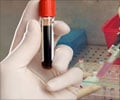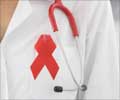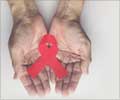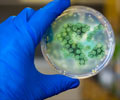- Gallo RC, Salahuddin SZ, Popovic M, et al. Frequent detection and isolation of cytopathic retroviruses (HTLV-III) from patients with AIDS and at risk for AIDS. Science. 1984; 224:500-3. [502]http://www.aidsinfo.nih.gov
- http://www.thebody.com
- http://www.aegis.com
Early History of AIDS
AIDS was first detected in early 1980s, among gays, Haitians and black Africans.
The origin of AIDS has always been a puzzle to the scientific world. It first came to light in the US in the early 1980s. In the history of AIDS there are three periods. The first is the clinical manifestations in the early 80s, when AIDS began in gays, followed by Haitians, people in Africa, and then hemophiliacs resulting in various opportunistic diseases such as pneumocystis carinii pneumonia (PCP), unexplained persistent lymphadenopathy, taxoplasmosis and Kaposi's sarcoma. These people showed increased susceptibility to rare opportunistic infection. Following which it was identified that these infections were highly resistant to treatment.
When AIDS became prevalent in US individuals suffered a complete collapse of the immune system. The second is the molecular diagnosis period, when scientists discovered the Human Immunodeficiency Virus (HIV). It was found that the virus caused impairment of the cell-mediated immunity (CMI). This was due to the loss or destruction of a large number of T-helper cells, which bear the CD4 marker on the surface. The third is the political period which dates to 2000.













